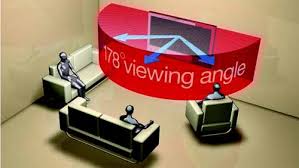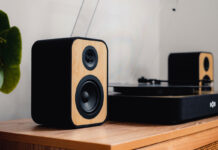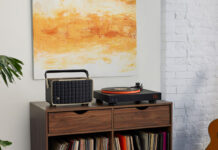I recently posted on what to look for when buying a new TV, which made me think it might be helpful to explain some of the TV terminology that you will encounter in your search. There are a lot of TV technology terms out there, but I will discuss those that I think are more important when evaluating TV’s.
 Resolution
Resolution
Resolution is a good descriptor of what to expect in picture clarity. The higher the resolution, the clearer the picture. In terms of how resolution is described in TV’s it is 480i, 480p, 720i, 720p, 1080i, 1080p, and 4K. Standard Definition TV is 480 (i and p), High Definition TV is 720 and 1080 (i and p), and Ultra High Definition TV is 4K. These numbers refer to the rows of pixels that are on the screen – the more pixels the higher the resolution.
Just like the number of rows of pixels varies, the number of pixels in each row also varies. A 480 screen typically has 720 pixels in each row for a total of about 345,000 pixels. A 720 screen has 1,280 pixels per row for a total of about 922,000 pixels, and a 1080 screen has 1,920 pixels per row for a total of about 2,074,000 pixels. So a 720 screen has about 3 times as many pixels as a 480, and a 1080 has over twice as many as a 720 screen. A 4K TV tops everything with 4,096 rows of 2,160 pixels for a whopping total of 8.8 million pixels or more than four times that of a 1080 High Definition screen.
So what’s with the “i” and the “p”? They stand for “interlaced” and “progressive,” and they work quite differently. Interlaced basically alternately displays the odd and even rows of pixels to create the image, so a 1080i screen shows only 540 rows of pixels at a time. With progressive, all the odd and even rows of pixels are displayed at the same time so it is a much smoother and higher resolution image than interlaced.
The bottom line is that the bigger the screen you have, the higher the resolution you need to get a clearer picture. A 480i or 480p will look fine on a 20 inch screen but not on a 60 incher. The minimum I would recommend is 1080p, unless again it is a small set. And don’t settle for only 1080i as it is essentially half the resolution of 1080p.
 Screen Technologies (Plasma, LED, LCD, OLED)
Screen Technologies (Plasma, LED, LCD, OLED)
I am not going to describe each technology in great detail, as you can find a better explanation in the post about as well as this post on . One thing to understand is that LED is a form of LCD (liquid crystal display) screen that simply uses energy efficient LED lights in order to create the picture. Older technology LCD uses CCFL (cold cathode fluorescent lamp) to do that. LED is not only more energy efficient but it can create a sharper picture because it can have “local dimming” which allows portions of the picture to be darker than others providing more contrast and a richer picture.
Plasma and OLED are totally different technologies than LCD/LED. Plasma uses gas filled cells to create the picture and OLED uses organic light emitting diodes, which will provide the best picture and will do it on an extremely thin screen.
Refresh Rate
Refresh rate refers to how quickly or how many times per second the picture is being “refreshed” on the screen. Think of it as the number of frames per second that the picture is being produced. You will see this identified in Hz (Hertz). A standard LCD TV is typically 60Hz, which is displaying the picture at 60 frames per second. You can also find 120Hz or 240Hz refresh rates, which is two to four times as many frames per second.
Plasmas typically run at over 600Hz, so they are very fast refresh rates, and OLED is typically even faster than plasmas.
 Anti-Blur
Anti-Blur
Anti-blur is related to refresh rate above. Anti blur refers to not seeing any blur in fast action on the screen. The slower the refresh rate, the more likely you are to see some blurring on the screen with a very fast scene or game. If you are an action gamer make sure your refresh rate is higher or use plasma or OLED technologies.
Aspect Ratio
Aspect ratio refers to the ratio of width to height for an image on the screen. Most TV’s you will see have a 16:9 aspect ratio, but you can usually adjust the picture for programming that is delivered with a 4:3 aspect ratio. A 16:9 aspect ratio is used for cinema-like broadcasts with a much wider screen. I wouldn’t worry too much about aspect ratio as most TV’s are adjustable so you can accommodate different broadcasts.
Contrast Ratio
The contrast ratio measures the difference between the brightest whites and the darkest blacks that a TV can display, and theoretically should be a good indicator of the quality of picture. The higher the contrast ratio, the better the picture quality as the TV will show better colour details and clarity. The reason I say “theoretically” is because there is no universally accepted standard way to measure contrast ratio so you can’t use it to compare TV’s. The only place it might be useful if you are comparing TV’s from the same manufacturer.
 Viewing Angle
Viewing Angle
The viewing angle refers to the maximum usable viewing range from the centre of the screen. It is an important factor depending on where you plan to put your TV relative to the viewing positions. For example if you have it in a family room with chairs scattered across the room, you will want to make sure it has a wider viewing angle, whereas it is less important for a bedroom TV placed directly at the foot of your bed.
Plasmas and OLED have the best viewing angles, and for LED/LCD TV’s you should get an IPS (in-plane switching) screen to get the best viewing angle.
MHL
MHL stands for Mobile High Definition Link, and essentially is a special HDMI port on some TV’s that enables you to mirror your smartphone or tablet on to the TV. The MHL HDMI port also provides power to the device so it will keep it charged. For more on this feature have a look at this post on .
TV technology has a myriad of other terms that you might encounter, but these are the most common ones that you should pay more attention to. Let me know if there are any others that you might have questions on.



